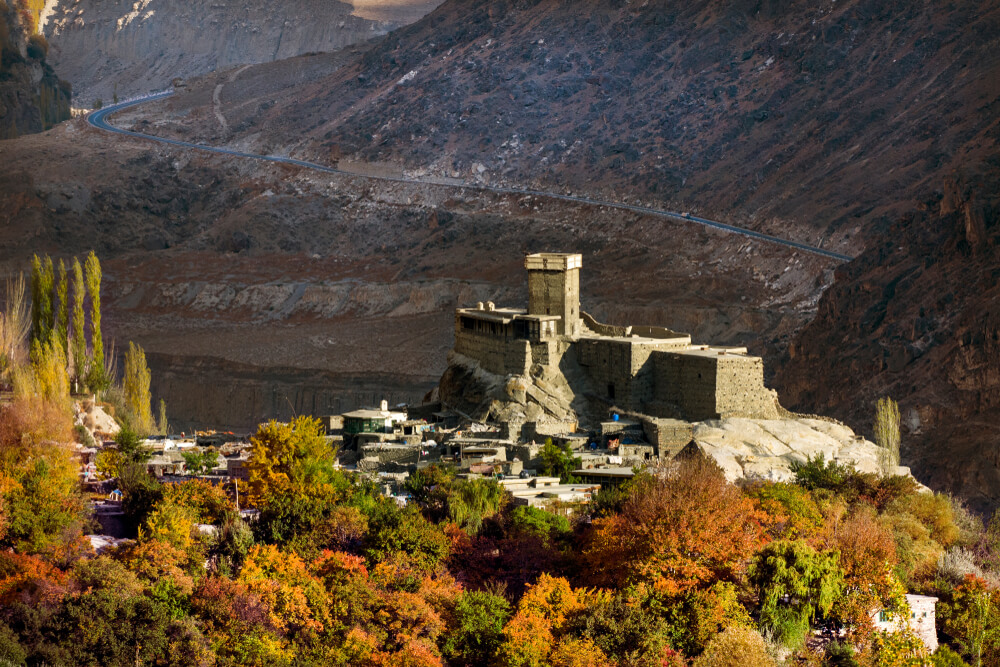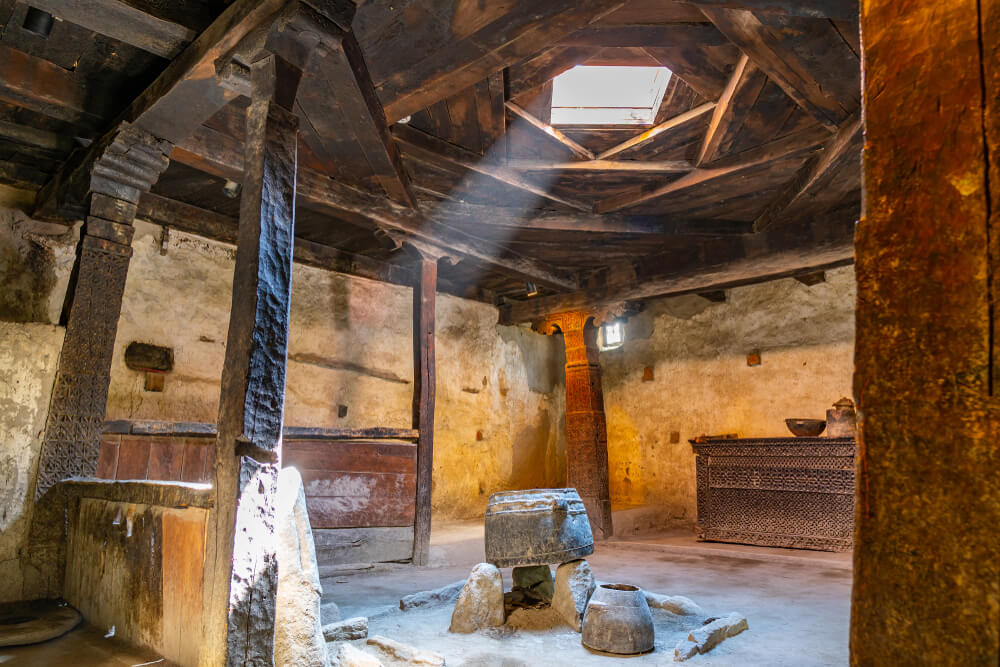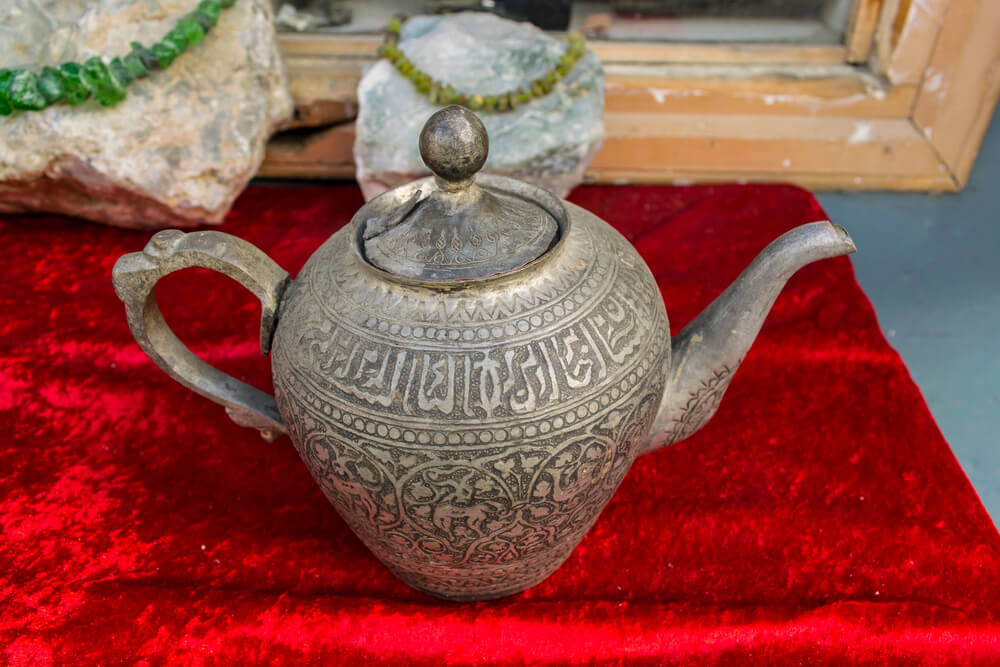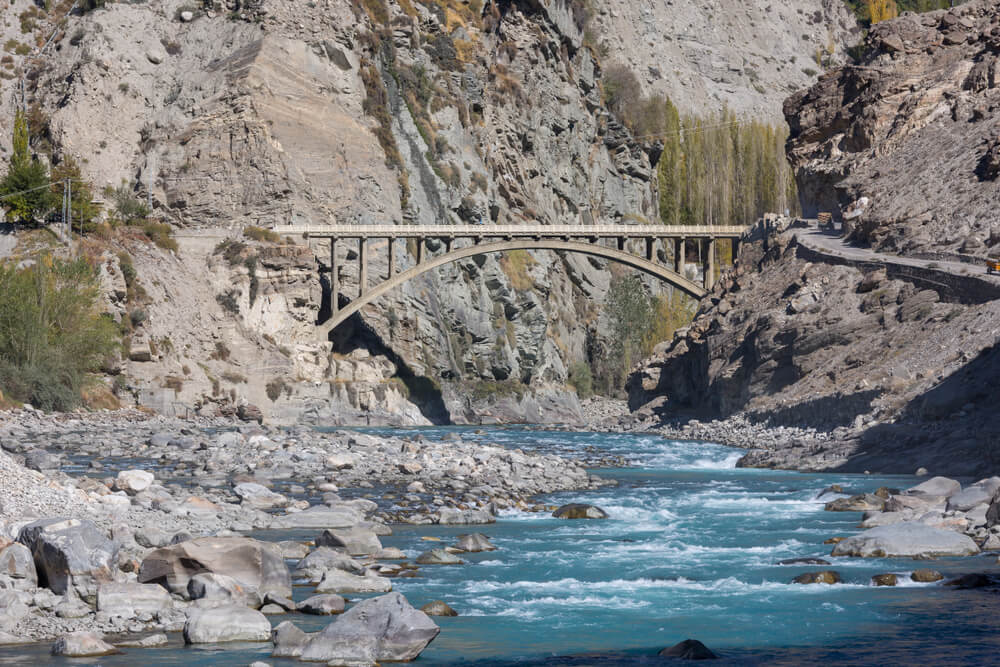Altit Fort
Altit Fort is the oldest monument in the Hunza region, standing strong and gracefully in the face of many battles, enemy attacks, and natural calamities like earthquakes. According to natives of Hunza, this fort is the birthplace of the Hunza Kingdom. Until 1972, Hunza was a princely state, but now it is a part of Pakistan. Altit fort is one of the most astonishing architectural masterpieces of the Hunza district and a popular tourist attraction in Gilgit-Baltistan. Because of its historical importance, Altit fort Hunza is considered an international heritage site and is visited by tourists from across the globe. It is one of the most attractive Forts in Pakistan.
The architecture of Altit fort
The rulers of Hunza built this 1100-year-old fort to showcase their grand display of courage and power to their opponents. The citadel is based upon wooden framed architecture and depicts the architectural influence of Tibet. It was built with such effort and skills that it can tolerate earthquakes of 8.5 magnitudes. The fort’s entrance is through a pathway made of stones with greenery on the right side. Upon entering the fort, you will see high-walled rooms made of bricks. You will realize that the doors of each room are constructed narrow and low, and you have to lower your back a bit to enter the rooms. Rulers intentionally built the doors to be only 4 to 5 feet in length, so if the enemies tried to enter the doors, they would have to bend down. In this way, guards of the fort would have a fair margin in capturing the enemies and even decapitate them. The unique architecture of the fort is built 1000 feet above the Hunza valley, so it will be easier for the Altit army to monitor the entire area during wartime. Let’s dive into the history of this spectacular masterpiece!
History of Altit fort
Inhabited by the royals of Hunza, this fort was mainly built for the defensive purpose and to monitor the caravans traveling through the silk route by the royal rulers (Mirs) of Hunza in the 11th century. In 1972, the royal family’s reign ended on the Altit fort. After that, in 1990, the Altit fort of Gilgit Baltistan was gifted to the agha khan foundation. Since then, they have done considerable work on maintaining this fort, and their services are commendable. Because of their efforts, Altit fort has been a tourist attraction since 2007.

Attractions at Altit fort Gilgit Baltistan
One of the major attractions of Altit fort, located in Gilgit Baltistan, is that you have a breathtaking view of Karakorum highway and enchanting Hunza valley from the altitude of the defense. It will not be wrong if I say that it is a heaven for nature-loving people as beauty lies in the eyes of the beholder. If you love mother nature, a journey to this mesmerizing location is never dull. Let’s talk about its attractions one by one.
Guard room
When you enter the fort of Hunza, the first room you will come across is the guard room or reception room, standing on pillars. There you will see a small, square-shaped wine cellar on the floor where Mirs of Altit fort used to have wine before the emergence of Islam Hunza Valley.
Conference hall
The next room you will enter is the conference hall, where the ruler of Hunza used to discuss public and tribe issues with the dominant personalities of that time. Once a week, they used to hold the supreme court in that conference room to discuss important political matters of the state.
Subterranean Jail
In one of the rooms, an underground, dark, poorly ventilated dungeon or jail can be spotted where the state officials used to keep prisoners and the rebellious individuals of the state.
Safety room
In the front of a dungeon, as you enter another room by bending your back a little, that room is called the safety room. Rulers used this room to keep royal women and children in times of War for their safety. and to keep newborn babies to protect them from harsh winter weather. There are some small openings in the walls of rooms. Defenders did archery from these holes to defeat the enemy.
Living room
A living room is also there where the king and queen used to live. We can see a fireplace in the room. In the same room, a sundial is present, used to determine the time in ancient times when no wall clocks or wristwatches existed. People accessed the time through the reflection of sunlight on the wall. There is a large brown box in the room where royals once used to store food items like wheat, rice, and dry fruits.

Shahi Hamam
Outside the living room of the citadel of Gilgit Baltistan, you will see an old underground toilet and a Hamam. It is a place used by the Mirs and their wives to take a bath.
View of Karakorum Highway
From the top of the Altit fort, you can have a picturesque view of the Karakorum highway of Gilgit Baltistan, Pakistan. Spanning vertically across the entire Gilgit Baltistan region, the curving of the Karakorum around the sky-rocketing mountains and zigzagging alongside the beautiful Hunza river is a jaw-dropping sight to witness. It is a loving first-sight experience for beauty admiring people.
Intricate woodwork
The entire fort comprises wooden cribbage to bear the intensity of earthquakes. The rigid joints of the defense are flexible enough to provide friction and movement but would not let the fort crumble in case of an earthquake. This citadel stands on many wooden pillars on which people from ancient times have carved their thoughts in a symbolic language related to Buddhism.
Standing Grave of Prince Ali khan
As you enter the fort’s safety room, you will witness a standing grave depicting the atrocities done by ancient rulers and their cruel history. According to historical facts, a family conflict emerged between two royal brothers, Prince Shah Abbas (Shabbos) and Prince Ali Khan, in the late 1540s. The standing grave inside fort Hunza is of a Prince named Ali Khan, who revolted against his elder brother for the kingdom’s sake. As a result, his elder brother entombed him alive. remains of prince Ali khan are still present in the Altit fort.
Pots used by the royal family
The dining room has a pot placed for cooking by the royals. In ancient times, as there was no metal available, people of old times made cooking pots with metamorphic rock, as this rock possesses the ability to absorb high heat.

Museum
British made the new section of this fort in 1891 for agents and army officers. Now a small museum is built in this section, where pictures of 1932 adorn the walls of an army colonel captured.
Shikari Tower of fort
Mirs built a shikari tower on the top of the Altit citadel to keep an eye on the entire region. So that the defenders would have a high chance of defeating the enemies; when you stand at the top of the tower, you can witness all the surrounding mountains and the Hunza river. Forces used this tower of Altit Fort to keep a watchful eye and to throw prisoners from high altitudes into the Hunza river to sentence them to death.
Royal Kitchen
An antique pot is present in the living room, which the royal family used to cook their meals. A fireplace is also present used for cooking purposes. One living room provided the sense of the kitchen and bedroom as people of old times preferred not to have multiple rooms.
View of Hunza river
Standing on the top of Altit Fort, you will get the opportunity to witness the beautiful and clean Hunza river of Gilgit Baltistan. Formed by the confluence of 5 locations named Batura glacier, Shimshal river, Chapursan river, Misgar river, and Khunjerab pass, it falls into the Attabad lake. The Karakorum highway runs near the Hunza river. This breathtaking view is a treat to the eyes and the mind.

Mosque
On the rooftop of the fort, along with the shikari tower, an ancient mosque (place of worship) can be seen, which was built almost 400 years ago, after the emergence of Islam in Gilgit Baltistan.
Altit fort ticket price
If you want to dive into the history of this silent splendor of Hunza Valley, you must purchase entrance tickets first. The entry ticket to this historical masterpiece is around PKR 500 to 600 for locals and PKR 1000 for foreigners.
Altit fort timings
Altit fort is open for its visitors on all days of the week. But the timings of summer and winter varies a little. It opens from 9 am to 6 pm in summer while in winter it opens from 9 am to 5 pm for visitors.
Location of Altit fort Hunza
Altit fort, an ancient fort of historical significance, is an architectural influence on the Tibetan people. This location is in the Altit town of Hunza valley near the city of Karim Abad in Gilgit Baltistan, northern Pakistan.
FAQs
Who built the Altit fort?
Altit fort Hunza was built by the royal rulers of Hunza to protect against invaders and keep an eye on the entire region. Rulers of Hunza, also called Mirs of Hunza, lived in Altit fort centuries ago. It also served as a trade center of Hunza city, attracting traders’ attention and bringing their goods traveling via the famous Silk Route.
How old is Altit fort?
Altit fort was built some 1100 years ago by Tibetan artisans on the orders of royal rulers of the Hunza district. Numerous earthquakes have occurred over the past 1100 years, but this fort has overcome every obstacle and is still standing.
The Hunza people are an inspiration, and their story is one of resilience in the face of great adversity. If you’re ever feeling down, take a trip to this Altit Fort Gilgit Baltistan, Pakistan; and let the locals show you how to live life to the fullest.
